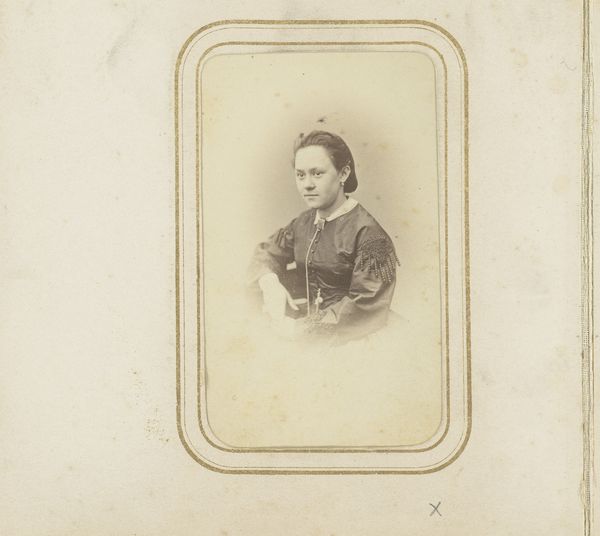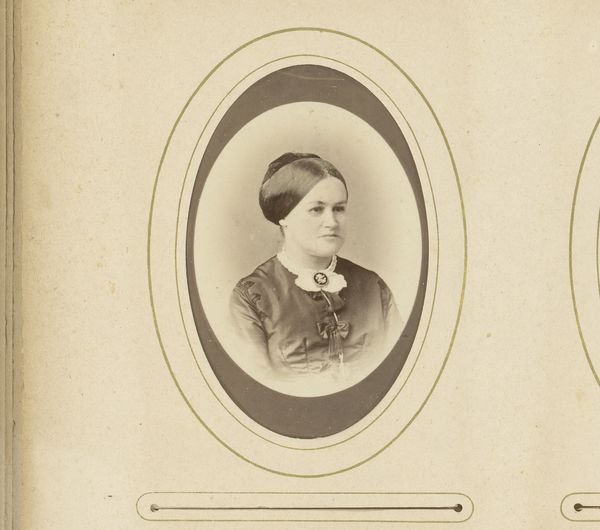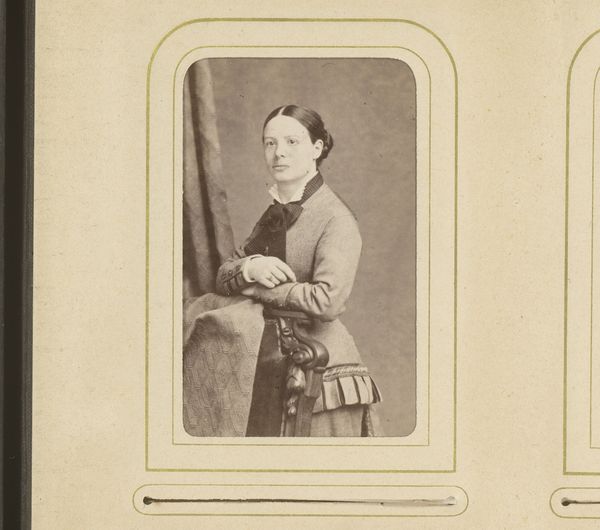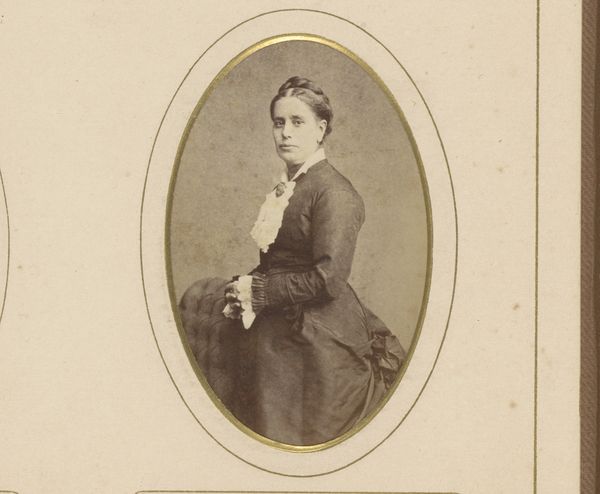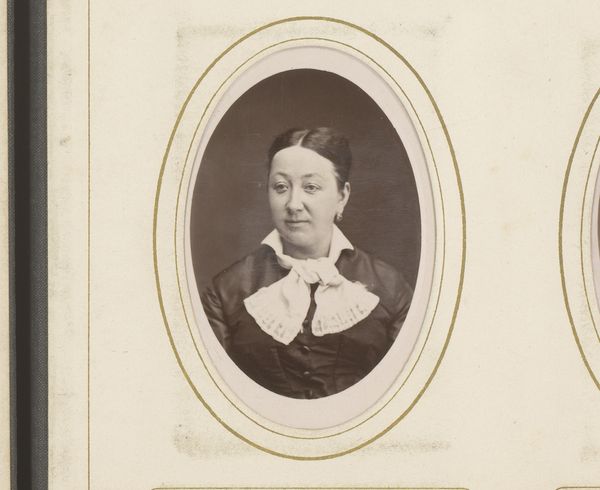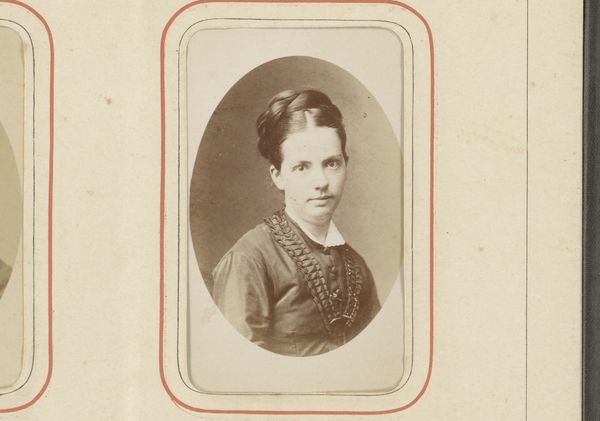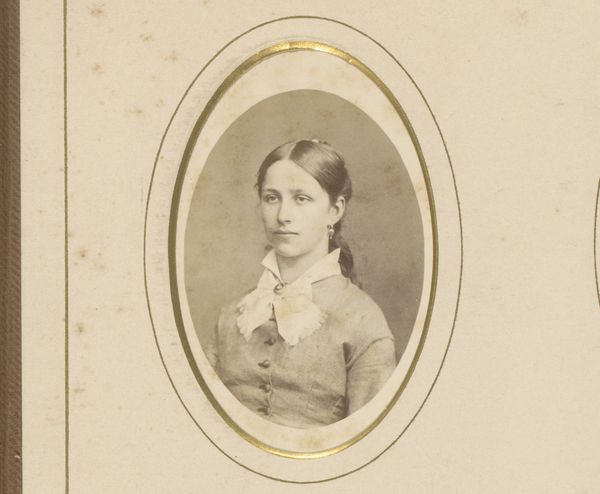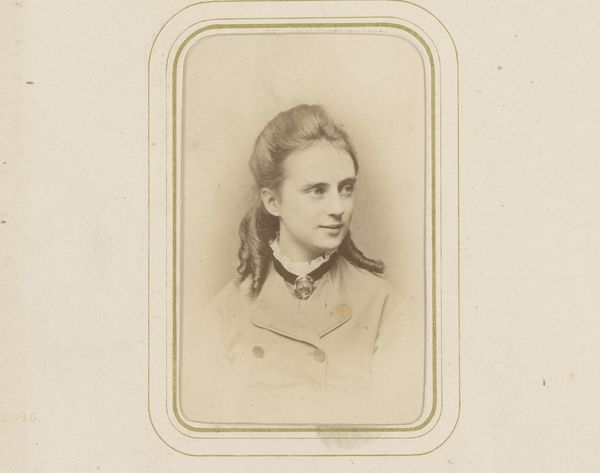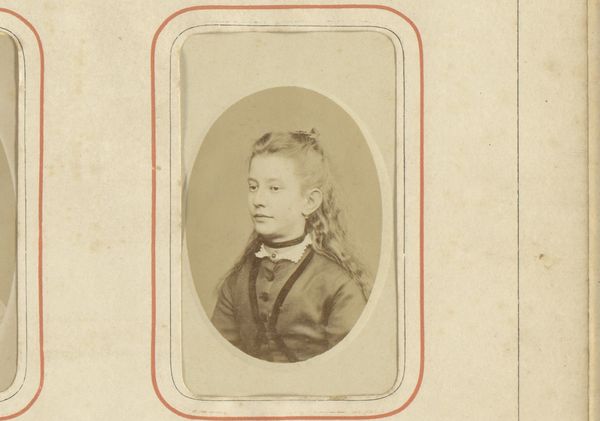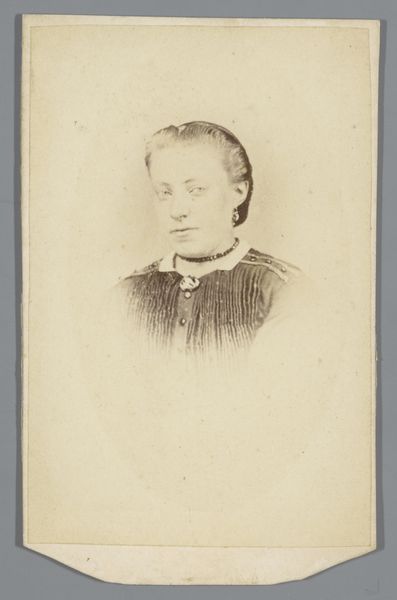
daguerreotype, photography
#
portrait
#
daguerreotype
#
photography
#
historical photography
#
old-timey
#
portrait drawing
Dimensions: height 86 mm, width 53 mm
Copyright: Rijks Museum: Open Domain
Curator: The delicacy of this young woman's expression immediately captivates, don't you think? It’s almost ethereally sad... Editor: Yes, that's certainly a powerful element! I see it too. Looking at the piece, which is titled "Portret van een jonge vrouw," and was likely made between 1860 and 1890, I’m immediately struck by its status as a daguerreotype – one of the earliest photographic processes. It marks such an interesting shift in image making and how images functioned in society. Curator: Absolutely. Knowing it’s a daguerreotype only deepens the sense of time suspended. I wonder about her story—did she feel the weight of the gaze, having to stay perfectly still for the exposure? Editor: I think that stillness is crucial! Photography in this period wasn’t just about capturing an image; it was about constructing a new type of public persona. Photography created wider access, so all kinds of families began participating in self-representation. So, her image represents a kind of democratization and self-determination. Curator: It feels so intimate still, though! The lighting catches her eye just so, and she seems on the precipice of a breath... I'm wondering about her clothes. Her garments suggest perhaps a hint of burgeoning independence, some little bit of rebellion? That chocker! I feel like she's testing the waters somehow. Editor: Those kinds of fashion choices indicate emerging bourgeois styles available to wider segments of society at that time, rather than necessarily “rebellion”. So it’s actually giving insights into industrial manufacturing, marketing strategies, and class structures—all reflected in who chose to purchase the kinds of commodities used for making images and portraying one’s self! Curator: True. And maybe my vision is romantic in viewing that sense of possibility? That hint of self about to come into view. Perhaps it's really us reflecting *ourselves* onto her now? It does beg so many questions about what we are supposed to feel while facing this "Portret van een jonge vrouw". Editor: Precisely, I’m really compelled by thinking about this portrait, as a relic, asking us what meanings we should pull into view.
Comments
No comments
Be the first to comment and join the conversation on the ultimate creative platform.
